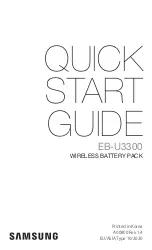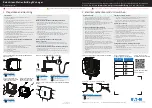
English
medical attention right away. It may result in loss of your eyesight.
ADDITIONAL PRECAUTIONS FOR CHARGER & BATTERY CARTRIDGE
1. Do not charge Battery Cartridge when temperature is BELOW 10°C (50°F)
or ABOVE 40°C (104°F).
2. Do not attempt to use a step-up transformer, an engine generator or DC
power receptacle.
3. Do not allow anything to cover or clog the charger vents.
4. Always protect the battery terminals when the battery cartridge is not used.
5. Do not short the battery cartridge.
6. Do not touch the terminals with any conductive material.
7. Avoid storing battery cartridge in a container with other metal objects such
as nails, coins, etc.
8. Do not expose battery cartridge to water or rain.
WARNiNG:
A battery short can cause a large current flow, overheating, possible burns
and even a breakdown.
9. Do not store the tool and Battery Cartridge in locations where the
temperature may reach or exceed 50°C (122°F).
10. Do not incinerate the Battery Cartridge even if it is severely damaged or is
completely worn out. The battery cartridge can explode in a fire.
11. Be careful not to drop, shake or strike battery.
12. Do not charge inside a box or container of any kind. The battery must be
placed in a well ventilated area during charging.
Operation
Always Check that the power supply corresponds to the voltage on the ratings
plate on your charger.
Charging With The Diagnostic Charger
Note:
Newly purchased Batteries are not fully charged and must be charged
before using in your cordless tool(s).
• Plug the battery charger into the proper AC voltage source.
• Insert the battery cartridge so that the ribs on the battery cartridge slide
into the grooves on the battery charger. Insert the cartridge fully into the
charger.
• When the battery cartridge is inserted, the Green charging light will Flash
indicating the charger has started the charging cycle. A steady Green light
will indicate the battery is completly charged and should be removed
from the charger.






























